SPFL Prize Money Distribution For 2024/25
Expected Payments Based on League Positions For All 42 Clubs
Now that all four divisions of the SPFL have concluded, the prize money for each of the 42 member clubs can be estimated with a fairly high degree of accuracy.
This lengthy end of season article will detail the:
exact prize money distributed last season 2023/24
expected prize money figure for each club for this season 2024/25
where the rest of the SPFL money goes
SPFL distribution model, and give evidence as to why this is one of the ‘least fair’ models across all of European football.
costs of VAR borne by each of the 12 Premiership clubs
other prize money each club can expect (including parachute payments)
If you would be interested in this detailed financial article - and access to my extensive archive of over 100 articles from the last 4 months - then please consider becoming a paid subscriber to my site.
The subscription is set at an introductory offer for year 1 only, and at £20 per year the annual sub offers the best value (around £1.66 per month effective cost)
If you cannot afford to pay for a subscription right now then please sign up as a free member and message me - I will sort something out for you.
Thanks, Gavin
THE PRIZE POT - REVIEWING LAST SEASON (2023/24)
The SPFL release their annual accounts in around the November of each year, therefore the exact figures each club will receive for season 2024/25 will not be publicly known for another 6 months. At that point I will do my own analysis of the accounts in the finances section of my website. It must be noted that I am not a qualified accountant, however I have two separate degrees in accounting and finance and - as you can probably tell - an unhealthy interest in football finance for the last couple of decades.
Despite the fact this season’s figures are as yet unknown, we can still make a reasonable estimation of the size of the SPFL pot. In 2024, the SPFL reported a 6% increase in turnover from £41.9m to £44.3m. From this £44m there was £38m left for distribution to clubs after the deduction of all expenses. These include staff costs, marketing, advertising, auditing, referee costs, and introducing more cameras at every ground to improve the standard of VAR across the division (no laughing at the back).
Last season, The SPFL distributed that remaining £38m through 5 streams:
£33.7m to the 42 SPFL clubs based on league position
£2.9m for the League Cup
£592,000 for the Challenge Cup
£389,000 to the Scottish Women’s Premier League (SWPL)
£360,000 in parachute payments to relegated clubs
THE BREAKDOWN BY CLUB FOR THIS SEASON 2024/25
The SPFL accounts for last season (2023/24) showed that the league prize pot for the 42 clubs was £33.7m, which was a £2million increase (6%) - for the second consecutive year. My expected 2024/25 figures are hopefully on the conservative side, as they are based on another £2m (6%) increase only, to take the distributable pot to £35.7m.
This season the SPFL should report increased revenue due to both record sponsorship & an additional TV rights sale; Premier Sports are now paying at least £2m per season for the rights to 20 pre-split matches. Therefore, the pot could see a greater than £2m increase, and so the figure for each team would rise proportionally.
VAR COSTS AND PARACHUTE PAYMENTS
From the Premiership clubs prize money, there is a cost which must be deducted - this goes to the SFA to cover the operating of VAR in the division. It was reported to cost £1.2m per season when first introduced, with the costs divided based on league position - in the same proportion as prize money is awarded. Therefore, assuming a £1.2m cost, Celtic as champions will pay the most to cover the cost of VAR, 16.29% (£195k) while relegated St. Johnstone will only have to pay 5.47% (£65k) towards VAR.
After being relegated last season, Livingston will receive the year 1 Premiership parachute payment of around £300,000. If they lose the Playoff Final against Ross County they will receive an additional £125,000 next season in the form of year 2 parachute payments. The only other parachute payments are two separate payments paid to teams relegated from League Two, in their first two seasons outside the SPFL (£40k then £20k),
OTHER INCOME
On my website Www.ScottishFootball.info, I cover both UEFA prize money and UEFA solidarity payments in detail throughout the season. However, UEFA Club benefits is a newly disclosed payment this year - this is the money paid to each club for releasing players to UEFA national team competitions. This includes two Nations League campaigns, all European Qualifiers and EURO 2024. While qualifiers are covered, the bulk of this money will come from Euro 2024 due to the length of time the players are away. I previously compiled a breakdown of UEFA payments to the clubs for all of the 23-man Scottish Euro 2024 squad:
Adding the expected SPFL prize money, UEFA prize money, solidarity payments, club benefits, and deducting the VAR expenses we can get an estimated total expected prize money for each club for 2024/25 (not including the league cup and Scottish Cup payments).
This figure will come to over £100m for the first time in history. However, of that £108m, over 61% (£68m) will go to Celtic and Rangers combined. I described in detail how it may just be possible for a Tony Bloom inspired Hearts to disrupt Scottish football through incredibly smart recruitment and compete with the top two. However, the financial gap - deepened by UEFA prize money - really does seem insurmountable.
On a brighter note, the UEFA club benefits payments did also reach the Scottish Championship. For example, Dunfermline received a £6k payment from UEFA due to their now former goalkeeper, Owain Fon Williams, receiving a call up to represent Wales. Interestingly Livingston will receive more than double Falkirk’s total, due to their UEFA solidarity payments due from last season, and their parachute payment following relegation.
IMBALANCED DISTRIBUTION MODEL
There are two main aspects when arguing the existence of a financial imbalance in the SPFL. Firstly, the splitting of money between the Premiership and the other 30 clubs, and secondly the distribution amongst the 12 clubs in the Premiership.
The Premiership takes over 82% of the entire SPFL pot.
The Championship receives 12%, League one 3.45% and League Two 2.25%.
The CEOs of lower league clubs would reference this as a huge imbalance and want to see more help - and more money - trickling down the chain.
As for distribution within the top tier, of the 82% (£27.7m) that the Premiership took in 2023/24, the Champions received 16.29% of that pot (£4.5m) - a slice 3 times bigger than that of the bottom club in the Premiership.
According to UEFA, that top tier distribution means we have one of the least balanced TV revenue distribution models in Europe.
For the above graphic, the further to the left hand side the country is, the more balanced it’s distribution model is. The English Premier League has the second most balanced in all of Europe. Further to the right demonstrates more of an imbalance. Only a handful of leagues are more imbalanced than the Scottish Premiership. We can take specific examples from two leagues - the Netherlands and England - to demonstrate this.
Firstly, the Eredivisie in the Netherlands recently changed their distribution model, because the clubs believed that 12.95% of the pot going to the Champions and 2.45% to the team in 18th did not “strengthen the competitive balance in the Eredivisie”. The Scottish Champions receive 16.29% of the Premiership pot and 2nd place receives 11.67%. By the Dutch metric then, even a reduction of our champions’ slice from 16.29% to 12.95% would still be deemed to weaken the competitive balance of the league.
Secondly, in the EPL it is a markedly different, more balanced, distribution model. All clubs receive an equal share of both the UK and International TV rights, then there’s differing payments depending on how many times a team was shown on TV, and lastly there’s a merit payment based on league finish.
Despite the 6 different revenue streams, overall it results in one of the fairest distributions of prize money in world football – with the Champions receiving £176m, and bottom of the table receiving £110m, last year:
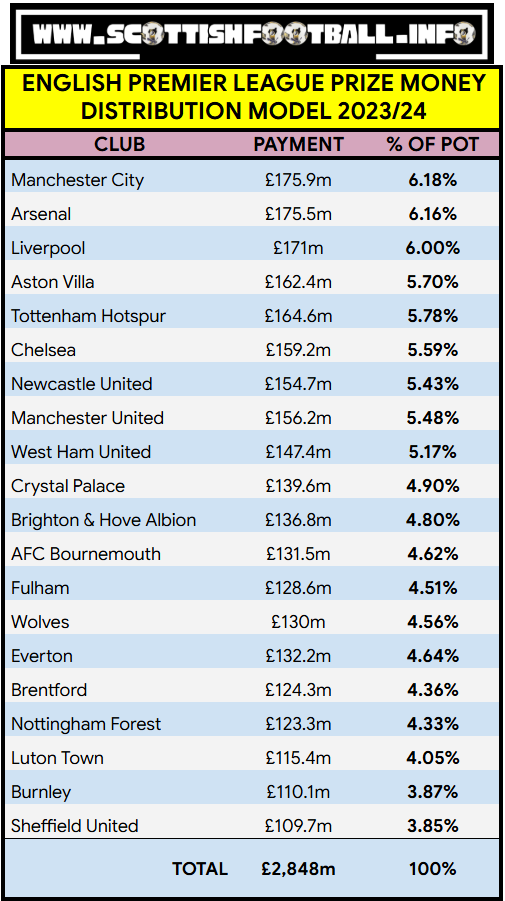
Of course there’s lots more money to go round in England, but their league is considered highly competitive and part of the reason for this is the equitable distribution model. The English Champions received £176m (6.18%), with bottom of the table receiving £110m (3.85%). Comparing that to the Scottish Champions who received 16.29% and the relegated club only took 5.47%.
This isn’t just a Celtic thing, and Rangers fans will be hoping that with their impending takeover it will be them that I am citing next season. But the SPFL had <£38m in total to distribute last season (£33.7m through league placements). Our champions, Celtic, will have earned more than that through Champions League payments alone this season, yet will still receive a near £5m slice of the £29m Premiership pot. It’s not a problem unique to Scotland either, it’s a growing issue where the Champions League revenue UEFA provides now causes a major financial imbalance in small to medium sized leagues like ours.
AN ALTERNATIVE SCOTTISH MODEL
There are arguments to be made that the distribution model doesn’t need to have as wide a gap between the top and the bottom of the Premiership. Yes, the Old Firm are the main drivers for the TV deal, but the competitive imbalance in the league has worsened almost year on year for 40 years - and our distribution model undoubtedly exacerbates this. It can be reasoned that sharing the money ‘more fairly’, would lead to a raising of the standard of the entire division, which benefits the Old Firm longer term. The top two earn up to ten times more money through UEFA competition, which is the true financial reward for finishing first and second in the league.
In a hypothetical new look distribution model, both the top clubs could take a reduction in their prize money, which would have a small financial impact, given the enormous revenues of Celtic (£124m) and Rangers (£88m). Meanwhile an extra few hundred thousand pounds would be a significant uplift to the clubs further down the division, operating under much smaller budgets. Any change in distribution could come with the caveat that the extra money must and be used solely to finance youth academies or player development - again for the good of the wider Scottish game.
An example of an alternate distribution model, following the English example of the narrow % band between top and bottom, gives an example of how the same pot could be split differently. The top four clubs all have the access to the real money pot - in the form of UEFA qualifiers. The top four could therefore all take a cut in prize money, or there could be a different model where only the top two reduce their % share of the pie. This is just a quick example to demonstrate how a cut at the top positively impacts the rest of the league.
The redistribution of funds within the Premiership could just be the first step as part of a wider financial change in the country. Dutch top flight clubs agreed that some of the UEFA solidarity payments should continue to go to the second tier of Dutch football, to be spent on youth academies in order “To further strengthen the competitive balance in Dutch professional football as a whole”. This was an option that was open to the Scottish Premiership clubs - but the clubs voted against sharing any of the UEFA solidarity payments with the lower tiers. Colour me shocked.
A more radical change would be the introduction of some form of “UEFA tax” which could also help improve the overall quality of the league, if everyone bought into the ‘rising tide lifts all boats’ philosophy. They seem to have done just that in the Eredivisie, as the Dutch topflight clubs once again voted to continue their policy where clubs playing in Europe give up 3.75% of their UEFA revenues to be distributed to the non-European playing clubs (previously was 5%).
If there was a 5% UEFA tax for last season (2023/24), Celtic would have given €1.8m of €36.5m Champions League money back to the SPFL, while Rangers would have given €1m of €20m UEFA earnings. If it was applied to all teams in the group stages, Aberdeen would have given €250k of €5m back to the SPFL. The €3m funds raised in that example could be used to either re-distribute amongst only Premiership clubs, or to be redistributed down further to help the lower tier clubs. Several of which have either entered, or come close to entering, administration this season.
The Netherlands, for seven years, put their ‘UEFA tax’ into a fund to support clubs transitioning from artificial to natural grass pitches, to again improve the overall standard of the league. In 2023 they then voted in a rule change that all top flight clubs must play on natural grass as of the 2025/26 season, with a fund in place to support this. The following year, the Scottish Premiership introduced the same rule, which will come into effect at the beginning of the 2026/27 season. This means that the coming season (2025/26) will be the last that Kilmarnock, Falkirk, and potentially Livingston will be able to use their artificial surface in the top flight. Of course, there has been no fund set up in Scotland to support the clubs with the extra financial burden created by this rule change.
A genuine thank you for being a paid subscriber.
Your support is the reason I have continued to do this kind of research this season.
If you find any of my stuff interesting, please tell me on social media which may encourage others to join you here.
Better yet, please tell one of your friends to give my website a try. I have enabled 7-day free trials for the months of May and June only.



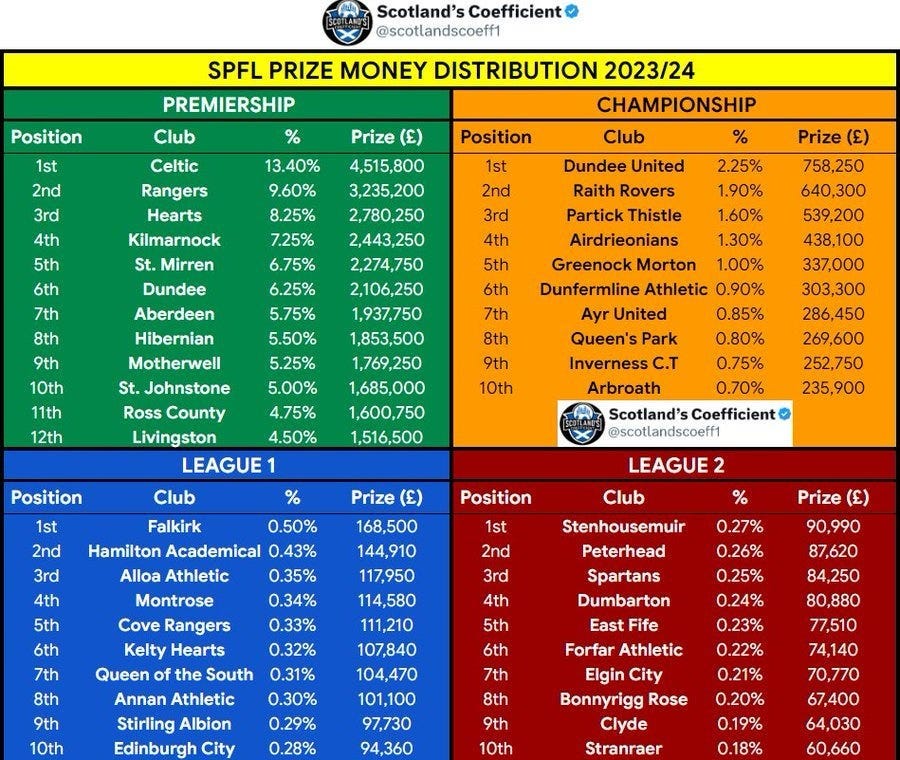
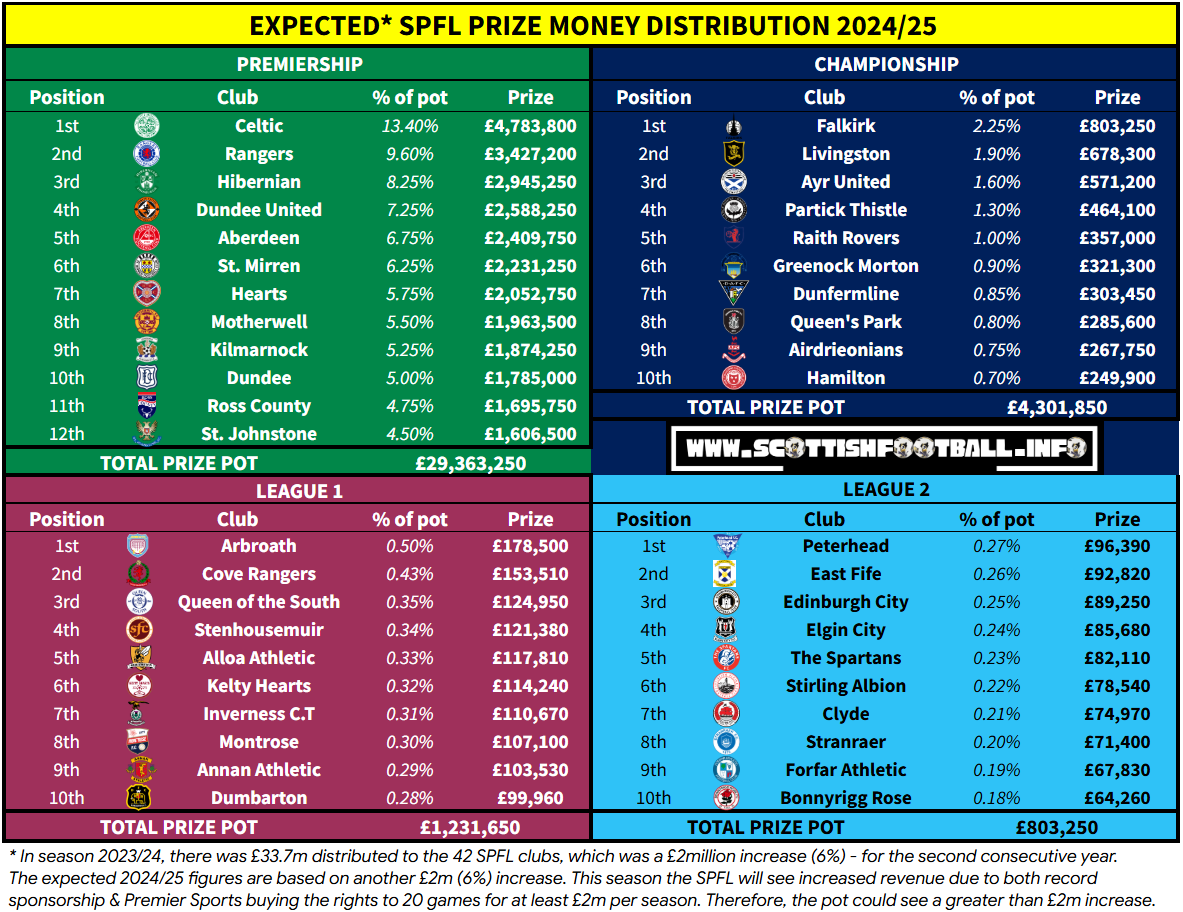
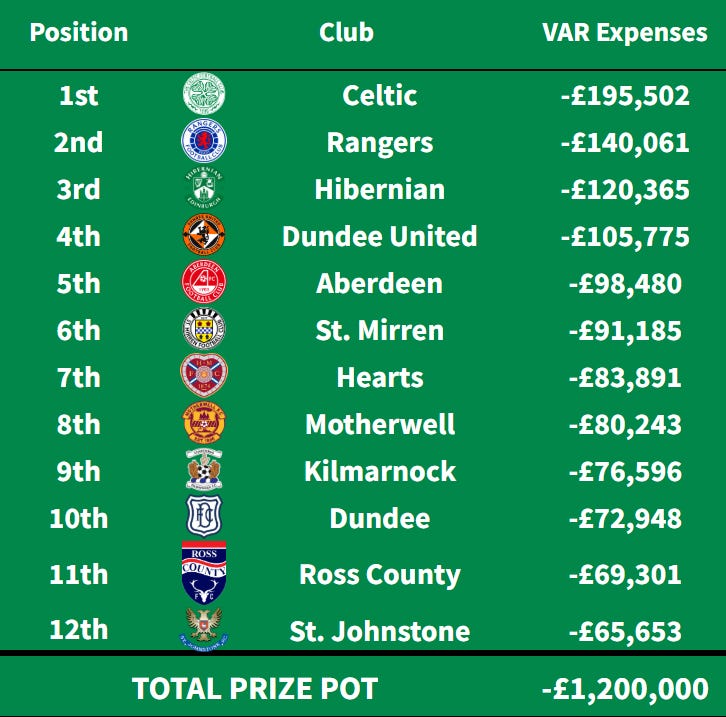
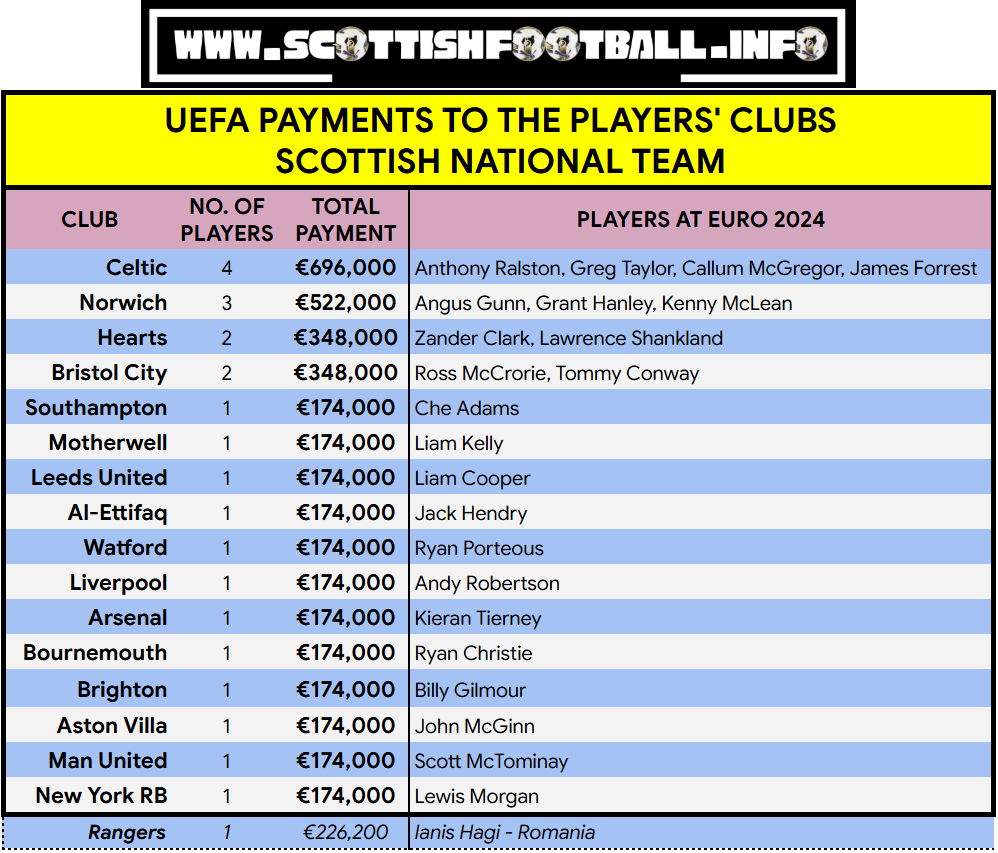
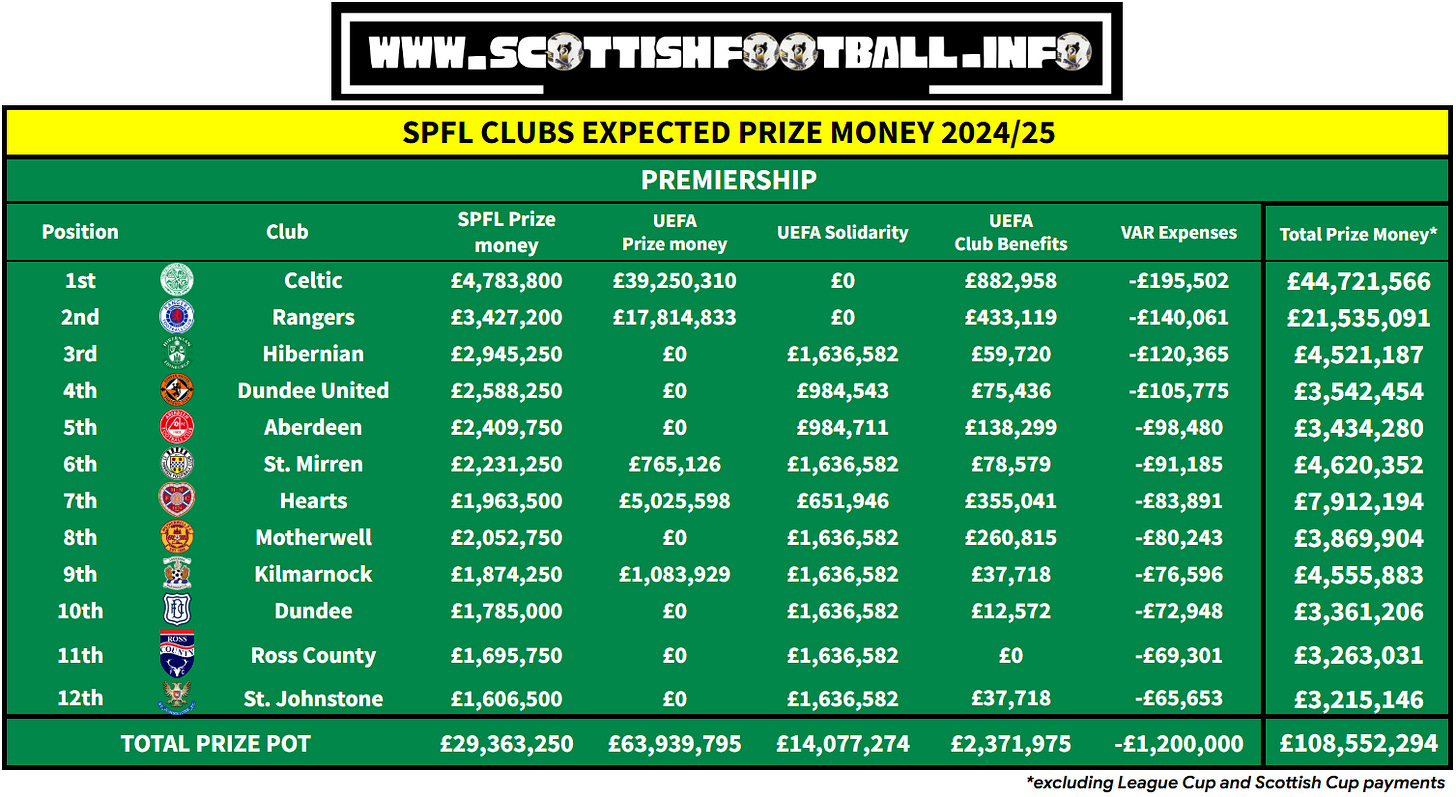
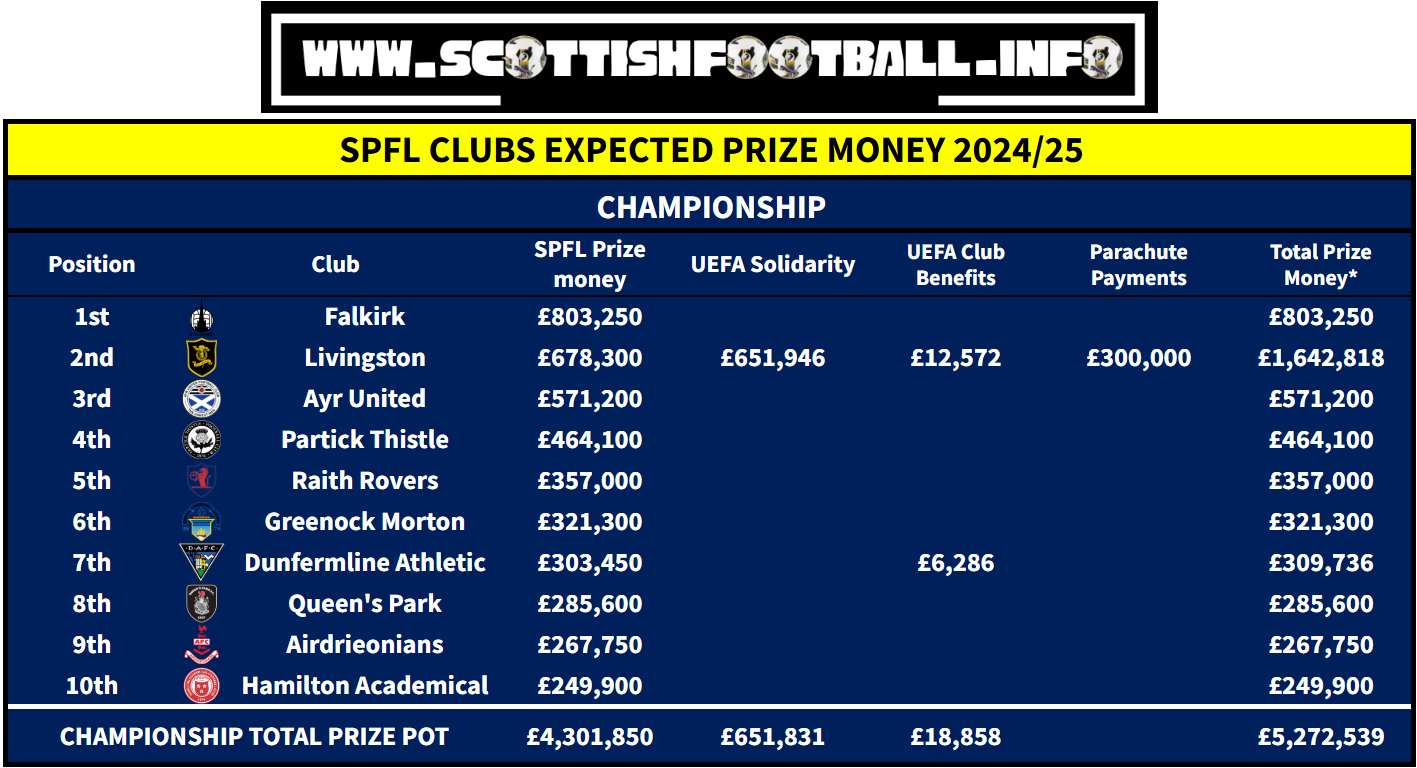
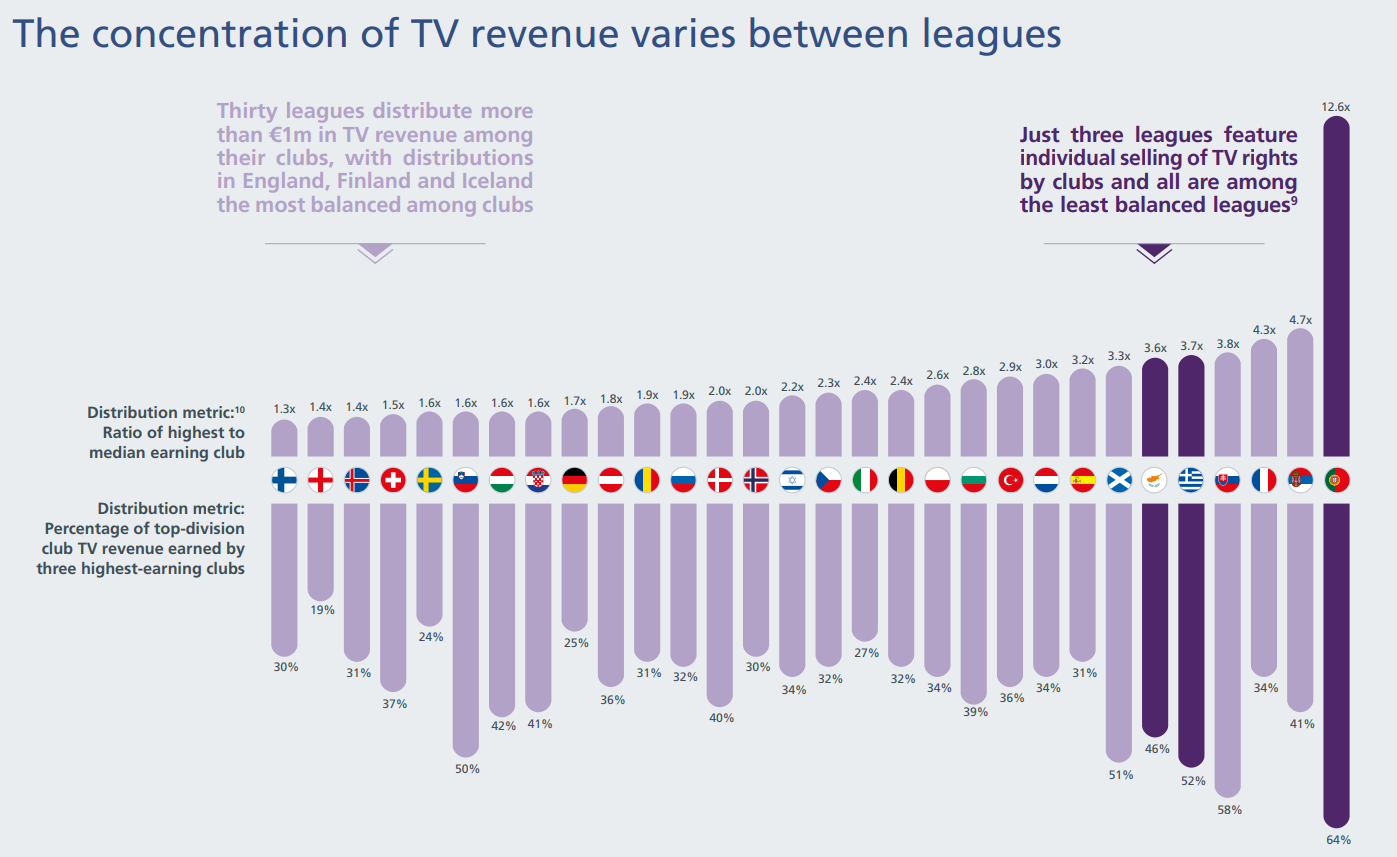
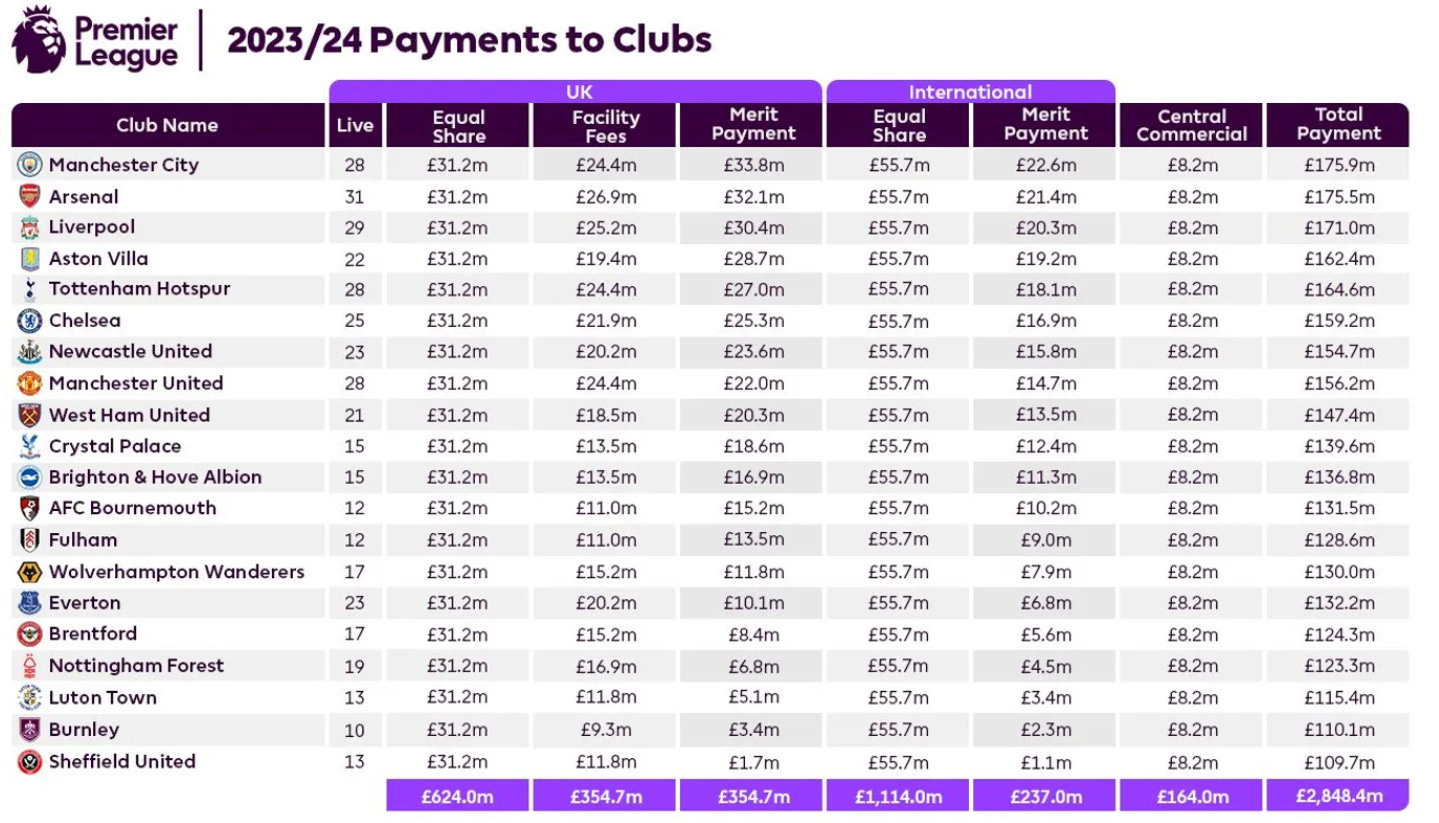
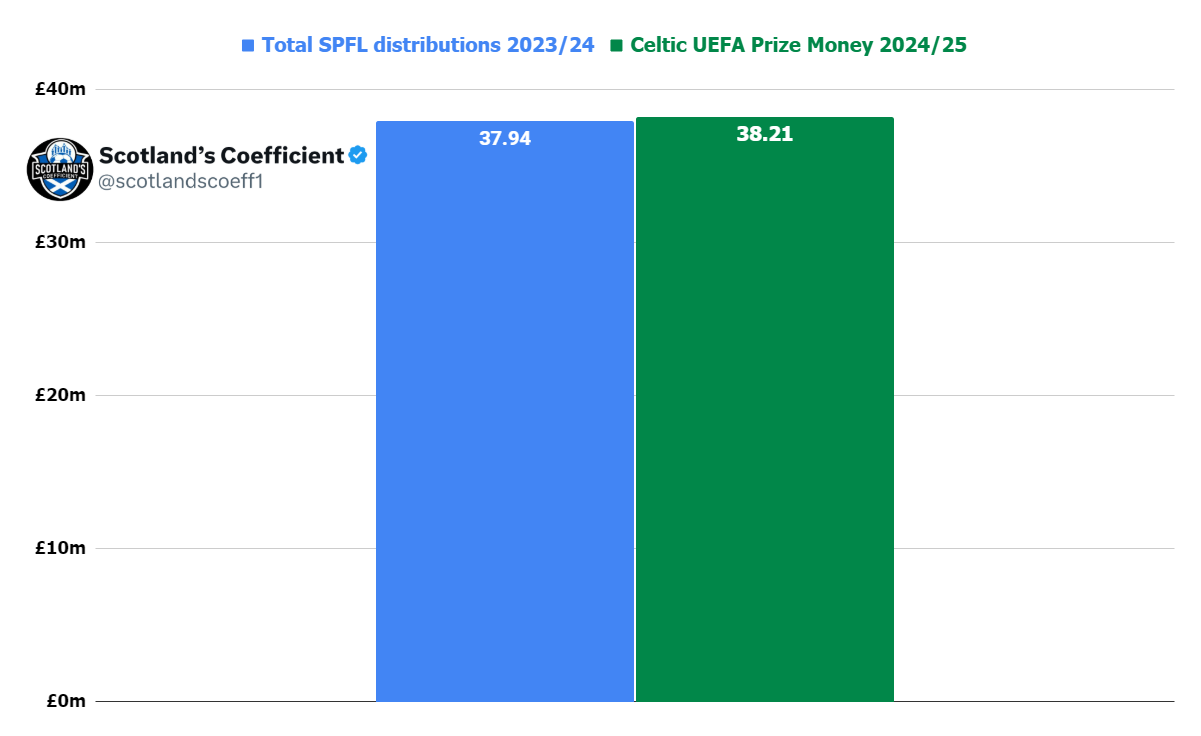
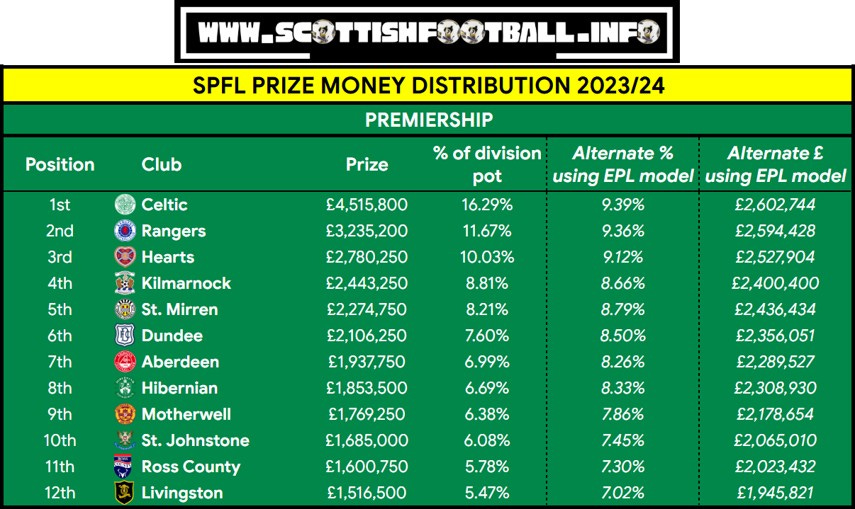
Couple of your 2024/25 tables have Aberdeen and Dundee Utd, and Hearts and Motherwell in the wrong final positions?
Rangers with far more coeff points yet doesn't seem to change their earnings. So I ask, what's the point in trying to advance the Scottish coeff? Shouldn't a club who make all that difference receive more?
Would like to see expenditures against earnings in uefa for the top 2 (Celtic and Rangers) - Flights, accommodations, meals/beverages, training facilities, wages etc. How would the earnings look then?
Would also like to see a full earnings with ticket sales, tv rights, (all monies earned) against expenditures (wages, running costs etc) though I dare say this would be too big a feat.
Just a thought.
Even better if you could do the entire top flight in Scotland. Just to show the struggles of say Ross Cty to the likes of Celtic.